Featured image credit: SpaceX
Lift Off Time | April 8, 2022 – 15:17:12 UTC | 11:17:12 EDT |
|---|---|
Mission Name | Axiom Space Mission 1, the first fully private mission to the International Space Station |
Launch Provider | SpaceX |
Customer | Axiom |
Rocket | Falcon 9 Block 5, B1062-5; 90.73 day turnaround |
Launch Location | Launch Complex 39A (LC-39A), Kennedy Space Center, Florida, USA |
Payload mass | Launch mass: ~13,000 kg (~28,600 lb) Landing mass: ~10,000 kg (~22,000 lb) |
Where are the satellites going? | Crew Dragon C206 will dock with the International Space Station (ISS) in a ~420 km circular orbit at 51.6º |
Will they be attempting to recover the first stage? | Yes |
Where will the first stage land? | B1062-5 will land 545 km downrange on A Shortfall of Gravitas Tug: Doug; Support: Doug |
Will they be attempting to recover the fairings? | There are no fairings on the vehicle |
Are these fairings new? | N/A |
How’s the weather looking? | The weather is currently 80% GO for launch (as of April 6, 2022 12:00 UTC) |
This will be the: | – 1st private mission to the ISS – 1st third flight of Dragon 2 – 147th Falcon 9 launch – 87th Falcon 9 flight with a flight proven booster – 91st re-flight of a booster – 12th re-flight of a booster in 2022 – 113th booster landing – 39th consecutive landing (a record) – 13th launch for SpaceX in 2022 – 46th SpaceX launch from LC-39A – 38th orbital launch attempt of 2022 |
Where to watch | Official Livestream |
What’s This All Mean?
SpaceX will launch four astronauts to the International Space Station (ISS) aboard their Crew Dragon vehicle. With all four crew members being tourists, the Axiom Space Mission 1 (Ax-1) mission will mark the first fully private mission to the ISS. The crew will launch atop a Falcon 9 Block 5, from Launch Complex 39A, at the Cape Canaveral Space Force Station, in Florida.
Axiom Space Mission 1
With SpaceX as the launch/mission provider and Axiom as the customer, the Ax-1 mission will mark the first fully private mission to the ISS. The four astronauts will launch in SpaceX’s Crew Dragon C206 Endeavour spacecraft–marking the first third flight of a Dragon 2 spacecraft.
The Ax-1 mission is a planned 10 day mission with eight days at the ISS, one day for ascend and docking, and one day for undocking and decent. Once docked to the ISS, the visitors will be on station with the Crew-3 astronauts Raja Chari, Thomas Marshburn, Kayla Barron, and Matthias Maurer and MS-21 cosmonauts Oleg Artemyev, Denis Matveev, and Sergey Korsakov.
Who Are The Astronauts?
Commander Michael López-Alegría
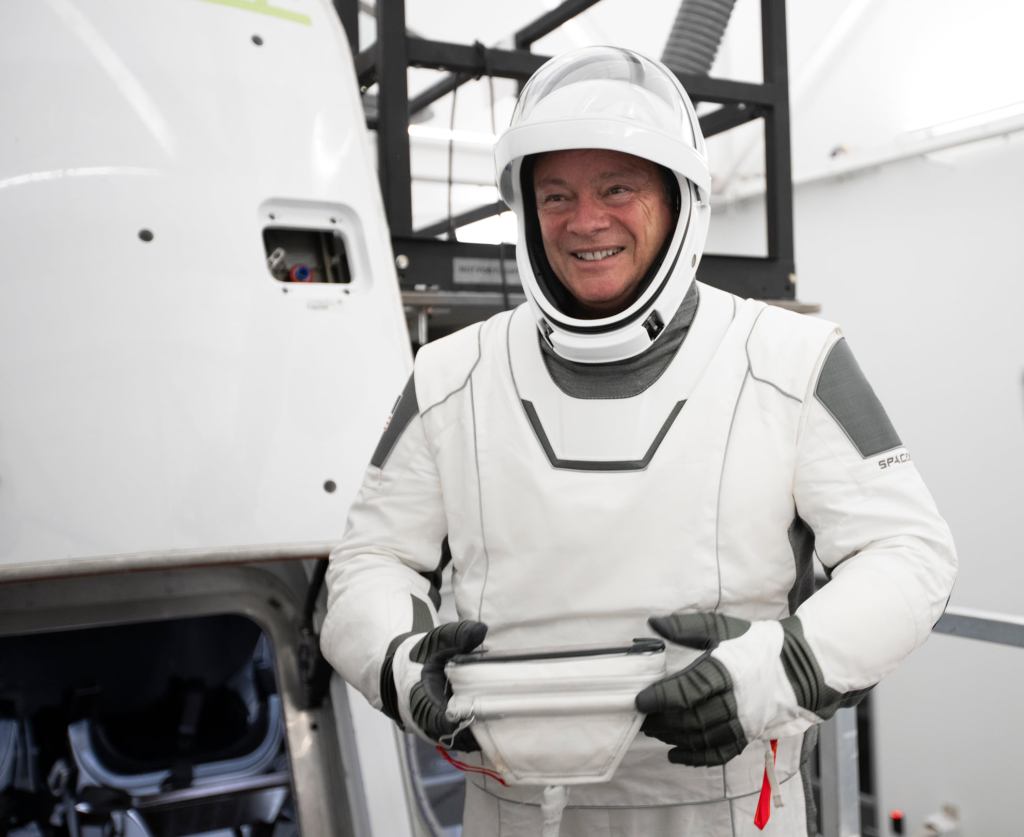
Serving as the spacecraft commander for the Axiom Space Mission 1, Michael López-Alegría is a former NASA astronaut and test pilot. He was born on May 30, 1958, in Madrid, Spain.
Following graduation from Mission Viejo high School, López-Alegría joined the United States Navy, where he earned his Bachelor’s in systems engineering and later his Master’s in aeronautical engineering.
In 1981, López-Alegría became an instructor pilot at the Naval Air Station Whiting Field.
López-Alegría has flown on four previous spaceflights: STS-73, STS-92, STS-113, and Soyuz TMA-9. On his four previous flights, he has conducted 10 EVAs for a total of just under 68 hours of EVA time. Despite this experience, López-Alegría will not be conducting an EVA on the Ax-1 mission, as NASA would not let him as a tourist.
Pilot Larry Conner
The spacecraft pilot of the Ax-1 mission will be Larry Conner. Born in 1950, Conner is an American real estate agent and tech entrepreneur.
Connor currently the head of the real estate investing firm Connor Group, which currently owns over 3-billion dollars in assets.
Connor is a private pilot and has competed in several aerobatic competitions. Axiom Space Mission 1 will be Conner’s first space flight.

Mission Specialist Mark Pathy

Serving as the first mission specialist on the Ax-1 mission, Mark Pathy is a Canadian businessman and philanthropist. Being the CEO of Mavrik–a private Canadian investment company–Pathy has a long history of being a company executive. He was formerly the CEO of Fednav, a private shipping company, and was the chairman of Stingray Group.
Ax-1 will be Pathy’s first space flight. According to Christopher Reynolds, he paid $50 million for this flight.
Mission Specialist Eytan Stibbe
The final crew member of the Ax-1 mission is Eytan Meir Stibbe. Serving as the second mission specialist, Stibbe is a Colonel in the Israeli Air Force.
In 1985, he co-founded Elar which establishes infrastructure in developing countries, including cell phone networks, naval defense systems, and other agricultural development projects. In 2011, he sold his share and invested in the company Mitrelli–an engineering, procurement, and construction company. He sold his shares of this company in 2018.
Axiom Space Mission 1 will also be Stibbe’s first space flight.
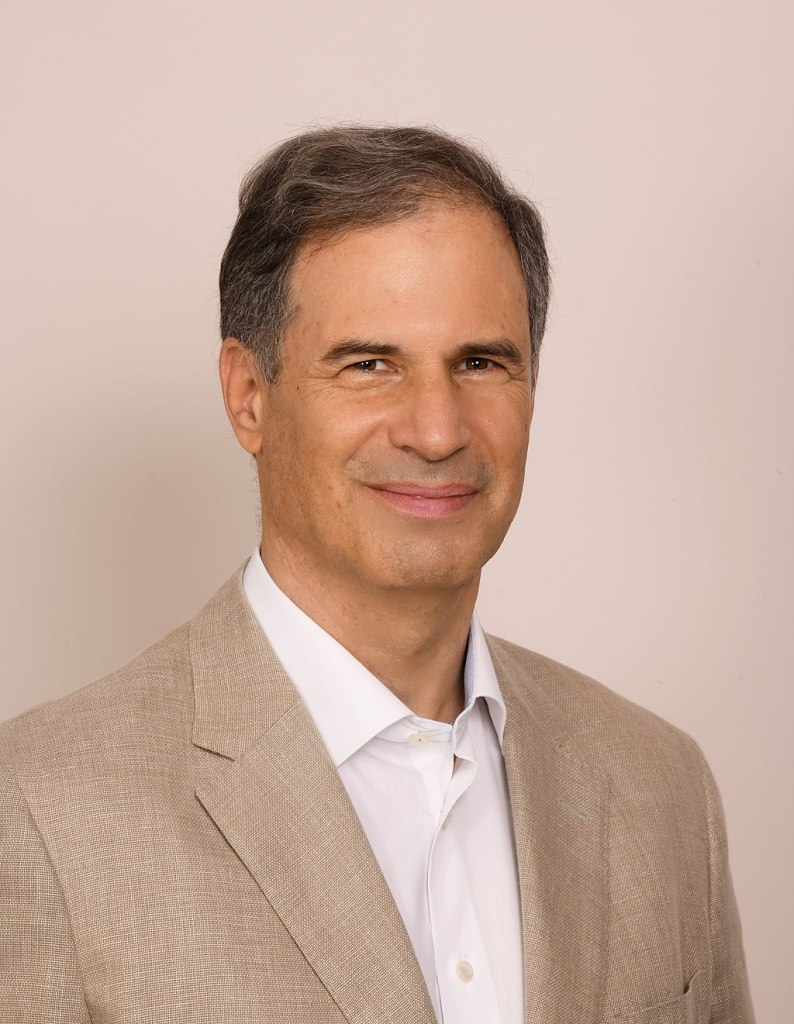
Crew Dragon C206 Endeavour
The Crew Dragon supporting the Axiom Space Mission 1 is the first operational Crew Dragon: C206. This Dragon has previously supported the SpaceX Demonstration Mission 2 and USCV-2 missions; the spacecraft–whose name was announced shortly after the launch of DM-2–was named by Bob Behnken and Doug Hurley as a tribute to the hard work by the SpaceX and NASA teams.
Between Endeavour’s first and second flights (DM-2 and Crew-2, respectively) it underwent a large amount of refurbishment and upgrades. These included upgrades to its abort system, upgrades to the structure of Dragon, and replacing the heatshield after slightly higher than expected rates of heat-shield erosion.
Following the Crew-2 mission, Endeavour was recovered from the Gulf of Mexico on November 9, 2021 by GO Navigator. It was then taken to SpaceX’s Dragon Land–the place where SpaceX refurbishes Dragons. This process took longer than usual due to the large amount of leaked urine, which was trapped under Dragon’s floor boards when the urine collection system leaked after a tube failure. To ensure this problem doesn’t happen again, SpaceX switched to welding the tube instead of gluing it.
Besides the change to the waste management systems, the rest of the refurbishment was light: the critical main components of Dragon have held up very well.
Axiom Space Mission 1 Mission Profile
Following separation from the second stage, Crew Dragon will begin opening its nosecone. This exposes the forward Draco thrusters and the docking mechanism. Endeavour will then use its Draco thrusters to perform a number of phasing burns to increase its orbital altitude and align with the ISS.
Once the spacecraft is in the correct orbit and near the station, it will enter the ISS’ “keep out sphere.” Following a series of go/no-go polls, Dragon will dock itself to the ISS’ Zenith port on the Harmony module.
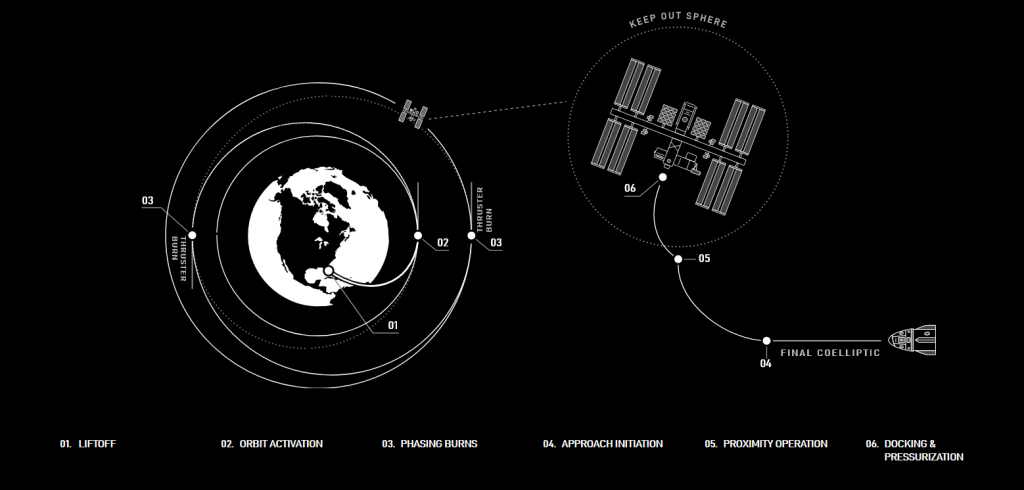
What Is Falcon 9 Block 5?
The Falcon 9 Block 5 is SpaceX’s partially reusable two-stage medium-lift launch vehicle. The vehicle consists of a reusable first stage, an expendable second stage, and, when in payload configuration, a pair of reusable fairing halves. In this case, however, on top of Falcon 9 is Crew Dragon.
First Stage
The Falcon 9 first stage contains 9 Merlin 1D+ sea level engines. Each engine uses an open gas generator cycle and runs on RP-1 and liquid oxygen (LOx). Each engine produces 845 kN of thrust at sea level, with a specific impulse (ISP) of 285 seconds, and 934 kN in a vacuum with an ISP of 313 seconds. Due to the powerful nature of the engine, and the large amount of them, the Falcon 9 first stage is able to lose an engine right off the pad, or up to two later in flight, and be able to successfully place the payload into orbit.
The Merlin engines are ignited by triethylaluminum and triethylborane (TEA-TEB), which instantaneously burst into flames when mixed in the presence of oxygen. During static fire and launch the TEA-TEB is provided by the ground service equipment. However, as the Falcon 9 first stage is able to propulsively land, three of the Merlin engines (E1, E5, and E9) contain TEA-TEB canisters to relight for the boost back, reentry, and landing burns.
Second Stage
The Falcon 9 second stage is the only expendable part of the Falcon 9. It contains a singular MVacD engine that produces 992 kN of thrust and an ISP of 348 seconds. The second stage is capable of doing several burns, allowing the Falcon 9 to put payloads in several different orbits.
For missions with many burns and/or long coasts between burns, the second stage is able to be equipped with a mission extension package. When the second stage has this package it has a grey strip, which helps keep the RP-1 warm, an increased number of composite-overwrapped pressure vessels (COPVs) for pressurization control, and additional TEA-TEB.
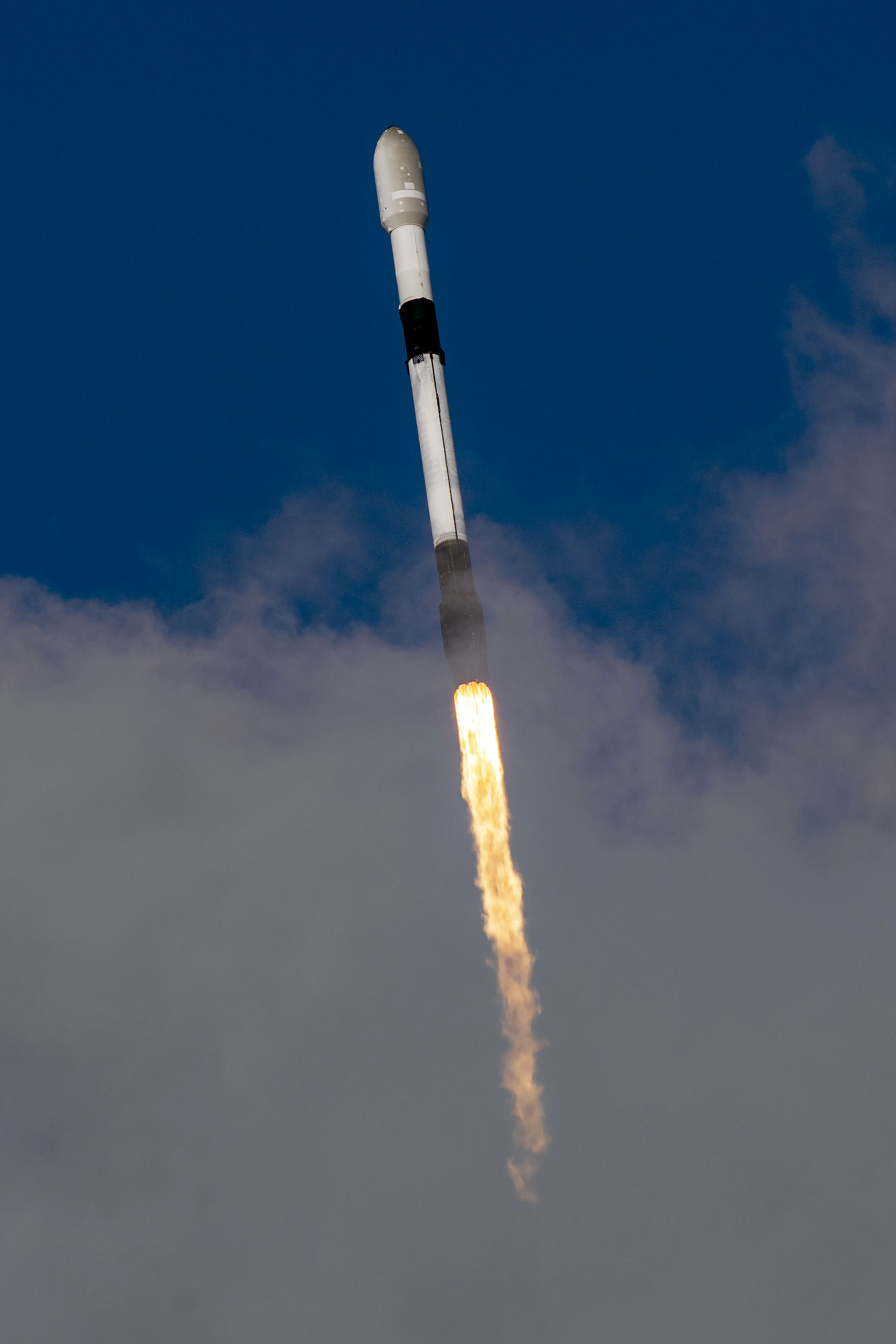
Falcon 9 Booster
The booster supporting the Ax-1 mission is B1062-5. As the name implies, the booster has supported four previous missions, making Ax-1 its fifth flight. Upon successful landing, its designation will change to B1062-6.
| B1062’s missions | Launch Date (UTC) | Turnaround Time (Days) |
| GPS Block III SV04 | November 5, 2020 23:24 | N/A |
| GPS Block III SV05 | June 17, 2021 16:09 | 223.70 |
| Inspiration4 | September 16, 2021 0:02 | 90.33 |
| Starlink Group 4-5 | January 6, 2022 21:49 | 112.91 |
| Ax-1 | April 8, 2022 15:17 | 90.73 |
Following stage separation, the Falcon 9 will conduct two burns. These burns will softly touch down the booster on SpaceX’s autonomous spaceport drone ships A Shortfall of Gravitas.
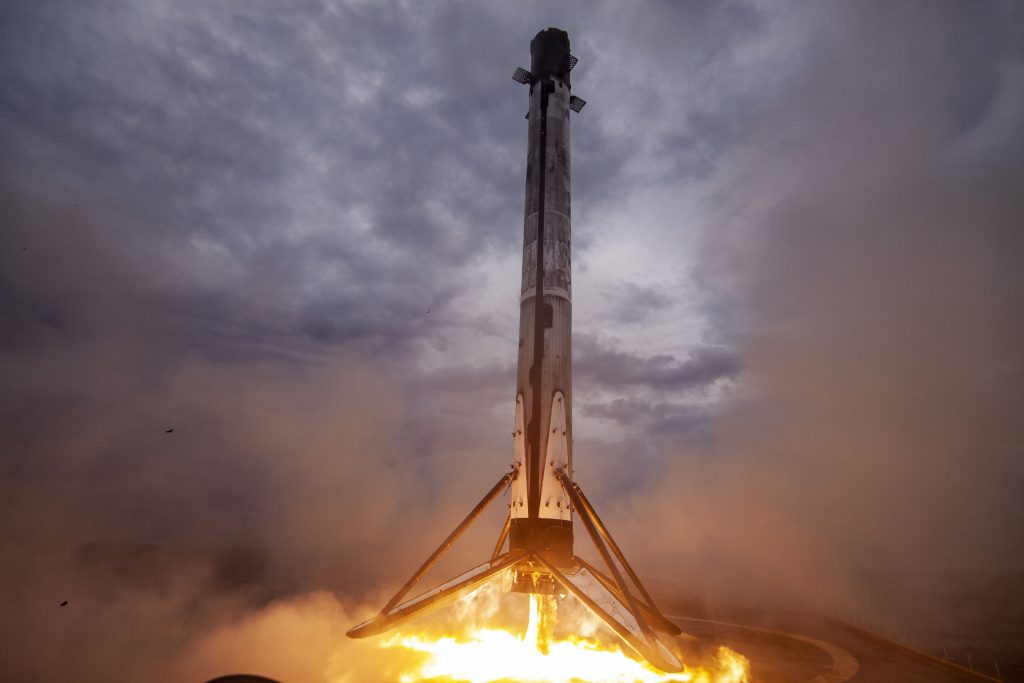
Ax-1 Countdown
All times are approximate
| HR/MIN/SEC | EVENT |
|---|---|
| 00:45:00 | SpaceX Launch Director verifies go for propellant load |
| 00:42:00 | Crew access arm retracts |
| 00:37:00 | Dragon’s launch escape system is armed |
| 00:35:00 | RP-1 (rocket grade kerosene) loading begins |
| 00:35:00 | 1st stage LOX (liquid oxygen) loading begins |
| 00:16:00 | 2nd stage LOX loading begins |
| 00:07:00 | Falcon 9 begins engine chill prior to launch |
| 00:05:00 | Dragon transitions to internal power |
| 00:01:00 | Command flight computer to begin final prelaunch checks |
| 00:01:00 | Propellant tank pressurization to flight pressure begins |
| 00:00:45 | SpaceX Launch Director verifies go for launch |
| 00:00:03 | Engine controller commands engine ignition sequence to start |
| 00:00:00 | Falcon 9 liftoff |
AX-1 LAUNCH, LANDING, AND DEPLOYMENT
| HR/MIN/SEC | EVENT |
|---|---|
| 00:01:02 | Max Q (moment of peak mechanical stress on the rocket) |
| 00:02:35 | 1st stage main engine cutoff (MECO) |
| 00:02:39 | 1st and 2nd stages separate |
| 00:02:46 | 2nd stage engine starts |
| 00:07:25 | 1st stage entry burn begins |
| 00:08:48 | 2nd stage engine cutoff (SECO-1) |
| 00:09:02 | 1st stage landing burn begins |
| 00:09:29 | 1st stage landing |
| 00:12:07 | Dragon separates from 2nd stage |
| 00:12:55 | Dragon nosecone open sequence begins |





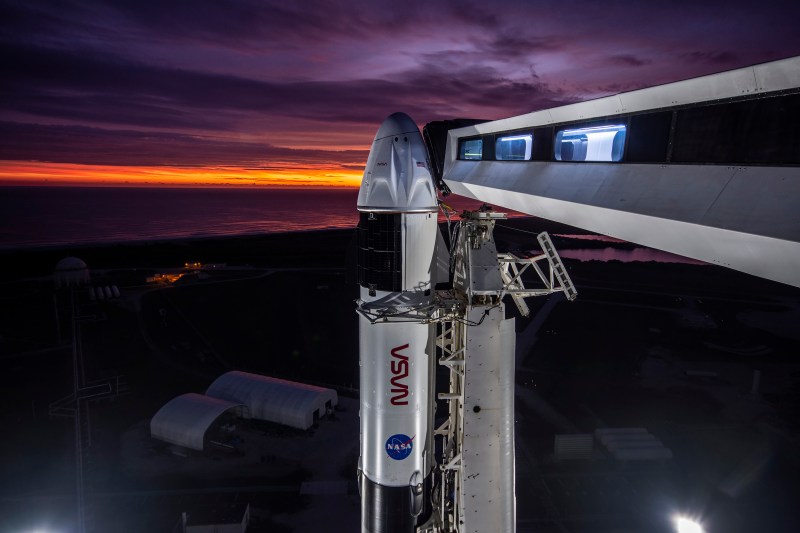
So is Tim not going to stream this? I would think we would because it’s a Crew Dragon launch to the ISS and it’s the first fully private mission to the ISS.
“SpaceX will launch four astronauts to the International Space Station (ISS) abort their Crew Dragon vehicle.” might want to fix this. it says abort not aboard.